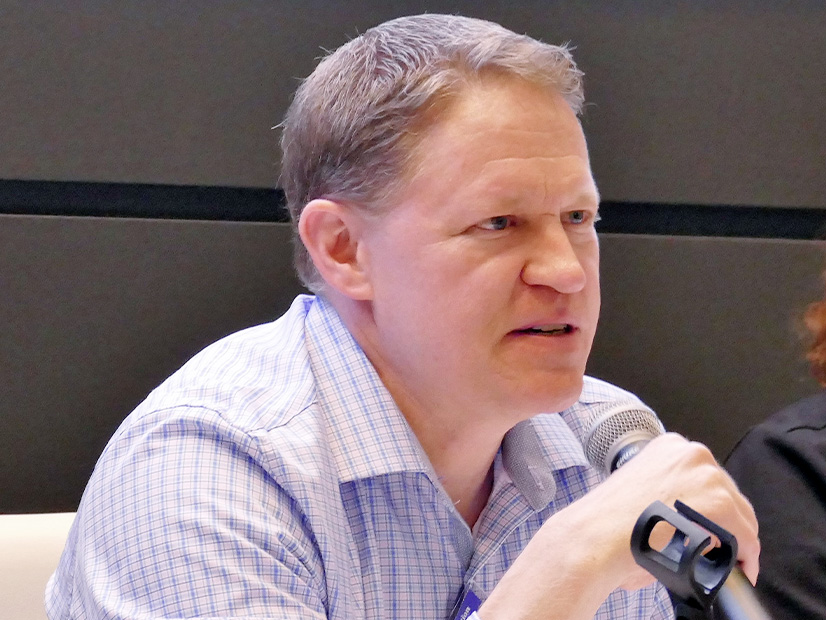CARMEL, Ind. — MISO Independent Market Monitor David Patton appeared at this week’s Market Subcommittee meeting to again criticize the future resource mix assumptions the RTO is using to craft a second long-range transmission plan (LRTP) for its Midwest region.
Stakeholder reactions to his advice were mixed.
Patton has voiced concerns in this year’s State of the Market report over the capacity expansion model MISO is using to inform the portfolio, which could run the region several billion dollars. He said MISO isn’t considering enough future battery storage, hybrid resources, other dispatchable resource additions and grid-enhancing technologies as alternatives to an expensive transmission buildout. (See “LRTP Doubts,” MISO IMM Zeroes in on Tx Congestion in State of the Market Report.)
At the MSC’s meeting Thursday, Patton said battery storage is going to become “remarkably economic over time to reduce congestion caused by renewables.” He said MISO’s second transmission planning future’s projection that it will have 466 GW of mostly renewable nameplate capacity by 2042 is unrealistic. (See MISO Modeling Line Options for 2nd LRTP Portfolio.) MISO is anticipating having 31 GW of battery storage and 10 GW of storage-plus-renewable hybrid resources in that timeframe.
“Future 2 has almost no chance of happening, and yet we’re using it to plan tranche 2” of the LRTP, Patton said.
This is the first time Patton has raised concerns related to transmission planning in his report. MISO’s Board of Directors has wondered whether it’s appropriate for the Monitor to recommend a change in direction on transmission planning. Patton has argued that markets and transmission planning are inextricably linked.
American Transmission Co.’s Bob McKee and ITC Holdings’ Brian Drumm said Future 2 represents years of stakeholder debate and collaboration.
McKee asked whether Patton attended the stakeholder meetings to hash out the future planning assumptions. Patton said he “unfortunately” did not and wish he had.
“I’m all for consensus, but you can’t confuse consensus with fact. You can’t ignore that solar will have declining capacity value, and you can’t just imagine you’re going to keep building it and building it,” Patton said.
Michelle Bloodworth, of coal lobby group America’s Power, said she shared Patton’s concerns and that the second future should contemplate a realistic future resource mix.
Invenergy’s Sophia Dossin asked whether Patton has suggestions on how MISO can incent construction on batteries and hybrid resources.
Patton said the simple economics of MISO’s more attractive capacity accreditation for batteries, hybrid resources and natural gas plants will spur developers to build. He added that he isn’t expecting future bans on building new gas plants in every state in the footprint.
MISO will make a formal response to the recommendations in this year’s State of the Market report in December.



